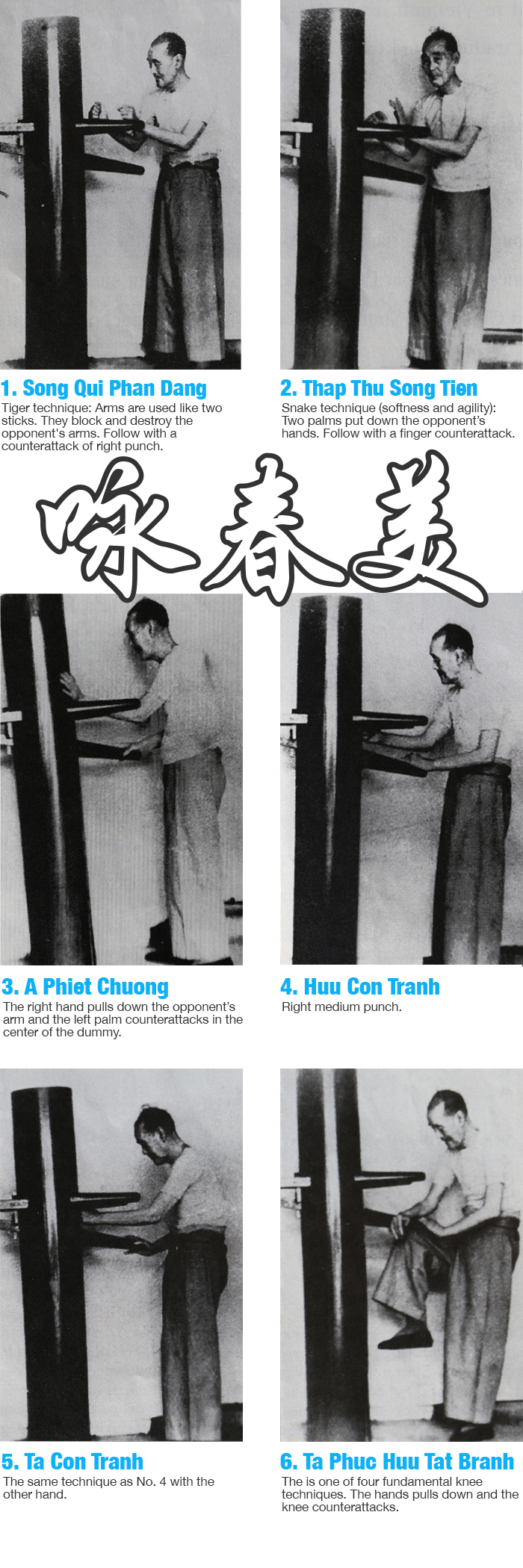Vintage filming of Seikung Pa Choung, from Shaolin Foshan Wing Chun.
Category / History
Grandmaster Pan Nam – Siu Lim Tao
Very rare performance of Pan Nam’s Siu Lim Tao during a visit to Foshan by Chris Chan & Ip Chun.
A Tribute to Grandmaster Tang Yick
A Tribute to Siu Lam Wing Tjun Kung Fu (Shaolin Weng Chun) Grandmaster Tang Yick.
SWK – Rooftop Fight Wing Chun (Longest Un-Edited Version)
Back in the 50’s and 60’s, a lot of illegal Rooftop Fights were held to test Wing Chun.
Interview with Sifu Tam Woon Biu – Chan Wha Shun Lineage 佛山詠春
Butterfly Sword – “Eight Slashing Knives” Baat Jaam Do
Happy Chinese New Year! Gung Hay Fat Choy!
2015 – The Year of The Goat
Chinese New Year’s Day’s date is calculated according to the Chinese lunar calendar, hence the date is different each year on the Gregorian (internationally used) calendar, but always in the period January 21 to February 20. In 2015 it’s Thursday, February 19. The Goat comes 8th in the Chinese zodiac. The 12 zodiac animals are: Rat, Ox, Tiger, Rabbit, Dragon, Snake, Horse, Goat, Monkey, Rooster, Dog, and Pig. According to Chinese astrology, each year (starting from Chinese New Year) is associated with an animal sign, occurring in a 12-year cycle. For example 2015 is a year of the Goat.
The Southern Lion Dance
Lion Dance, also known as Playing Lion, is a traditional sport activity and a folk art that imitates the movements of lions. In China, people believe that the lion is an auspicious animal and that Lion Dance would bring them good luck.
The Chinese Southern (南獅) Lion dance originated from Guangdong. The Southern Lion has a single horn, and is associated with the legend of a mythical monster called Nian. The lion’s head is traditionally constructed from papier-mâché, utilizing a hand-crafted bamboo frame, and a body made of fabric and fur detailing.
There are two main styles of Guangdong or Cantonese Lion: the Fut San or Fo Shan (translating to “Buddha Mountain”), and the Hok San or He Shan (translates to “Crane Mountain” 鶴山), both named after their geographic location. Fo Shan is the style many kung fu schools have adopted. It demands power from the movement and strength in the posture. The lion becomes a symbol and represents the kung fu school, only the most advanced students are allowed to perform. Other notable but less popular styles include the Fut-Hok (a hybrid of Fut San and Hok San created in Singapore by Kong Chow Wui Koon in the 1960s), and the Jow Ga (named after the Jow family style of kung fu). The different lion types can be identified from the design of the lion head.
“Lion dancing provides cardiovascular exercise, stance training, and weight training all rolled into one cultural package…”
– Doc-Fai Wong
Mind Like Water – Lee Jun Fan
Wing Chun in Vietnam
The Ving Tsun Athletic Association’s lineage tree includes the names of Leung Jan, his sons Leung Bik and Leung Chung, followed by one of Yip Man’s teachers, Chan Wah Shun. The list ends with “others”. One of the others is Luong Vu Te and he has helped to pioneer the legacy of martial arts in Vietnam.
Luong Vu Te was a military counselor of Nationalist China during the Chinese-Japanese War (1937- 1945) and was so skillful the Japanese Intelligence Service wanted him captured “dead or alive”. For this reason, he escaped to Northern Vietnam in 1940 and changed his name to Nguyen Te Cong to protect his identity.
Nguyen Te Cong, alias Luong Vu Te, moved to Hanoi and opened a Vinh Xuan (Wing Chun) school on Pho-Hue road. Most of his disciples were Chinese immigrants or Vietnamese with Chinese roots such as, Master Quach Tuyen, Master Qui, Master Ho Hai Long, Master Hach Phi Hung from Siagon and Ngo Si Qui from Hanoi. In 1954 Nguyen Te Cong moved to Saigon for political reasons. During the last ten years of his life, he kept only a few disciples and they continued the teaching of Vinh Xuan.
Sucong Nguyen Te Cong died in 1963 in Saigon at the age of 93.
Moc Nhan Tram (Mok Yang Jong) techniques of Grandmaster Luong Vu Te (Nguyen Te Cong).
Resources: Quang Hoa Chinese Newspaper, Oct 4, 1973 by disciple Lu Vien Khai. Photo restoration, WCU. Martial Arts Legends 12/98 K7436



